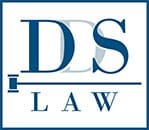Those that are subject of reconstitution are only lost or destroyed titles. This is in conformity with Section 1 of Republic Act No. 26 or “An Act Providing a Special Procedure for the Reconstitution of Torrens Certificates of Title (TCT) Lost or Destroyed.”
The lost or destroyed copies may be restored through the process of reconstitution. In Republic v. Holazo, the Supreme Court held that reconstitution, which is either judicial or administrative in nature, denotes a restoration of the instrument which is supposed to have been lost or destroyed in its original form or condition.
The purpose of reconstitution is to have the title or any document reproduced, after observing the procedure prescribed by law, in the same form they were when the loss or destruction occurred.
The filing of the petition initiates the proceedings for judicial reconstitution of a title. Such a petition is mandated to prove that the title sought to be reconstituted has either been lost or destroyed, and at the time of said loss or destruction, the petitioner is the registered owner of the property covered by the title.
Original Certificates of Title
Under Article 2 of RA 26, original certificates of title shall be reconstituted from such of the sources hereunder enumerated as may be available, in the following order:
- The owner’s duplicate of the certificate of title;
- The co-owner’s, mortgagee’s, or lessee’s duplicate of the certificate of title;
- A certified copy of the certificate of title, previously issued by the register of deeds or by a legal custodian thereof;
- An authenticated copy of the decree of registration or patent, as the case may be, pursuant to which the original certificate of title was issued;
- A document, on file in the registry of deeds, by which the property, the description of which is given in said document, is mortgaged, leased or encumbered, or an authenticated copy of said document showing that its original had been registered; and
- Any other document which, in the judgment of the court, is sufficient and proper basis for reconstituting the lost or destroyed certificate of title.
Transfer Certificates of Title (TCT)
While for Transfer Certificates of Title (TCT) under Section 3 of RA 26, shall be reconstituted from such of the sources hereunder enumerated as may be available, in the following order:
- The owner’s duplicate of the certificate of title;
- The co-owner’s, mortgagee’s, or lessee’s duplicate of the certificate of title;
- A certified copy of the certificate of title, previously issued by the register of deeds or by a legal custodian thereof;
- The deed of transfer or other document, on file in the registry of deeds, containing the description of the property, or an authenticated copy thereof, showing that its original had been registered, and pursuant to which the lost or destroyed transfer certificate of title was issued;
- A document, on file in the registry of deeds, by which the property, the description of which is given in said document, is mortgaged, leased or encumbered, or an authenticated copy of said document showing that its original had been registered; and
- Any other document which, in the judgment of the court, is sufficient and proper basis for reconstituting the lost or destroyed certificate of title.
Two Ways to Reconstitute Philippine Land Title
Administrative Reconstitution of Title
Administrative Reconstitution may be based on the owner’s duplicate of the certificate of title; and the co-owner’s, mortgagee’s, or lessee’s duplicate of said certificate.
In its Circular No. 13 dated July 26, 1989, the LRA requires that the petition for administrative reconstitution of title shall state, among others:
- Petitioner’s full name, address and other personal circumstances;
- The nature of his interest in the property; and
- The title number of the certificate of title sought to be reconstituted.
The petition shall be accompanied with three clear and legible photocopies of the owner’s or co-owner’s duplicate of the certificate of title and the registered owner’s affidavit, stating that:
- No deed or other instrument affecting the property had been presented for registration or, if there be any, the nature thereof, the date of its presentation, as well as the names of the parties, and whether the registration of such deed or instrument is still pending accomplishment;
- The owner’s duplicate certificate or co-owner’s duplicate is in due form without any apparent intentional alterations or erasures;
- The certificate of title is not the subject of litigation or investigation, administrative or judicial, regarding its genuineness or due execution or issuance;
- The certificate of title was in full force and effect at the time it was lost or destroyed;
- The certificate of title is covered by a declaration regularly issued by the Assessor’s Office; and
- Real estate taxes have been fully paid up to at least two years prior to the filing of said petition.
If the petition were based on the co-owner’s or mortgagee’s duplicate of the certificate of title, the petitioner shall state, in addition to the above-mentioned contents, that the owner’s duplicate has been lost or destroyed and the circumstances under which it was lost or destroyed.
Said petition may be filed with the Register of Deeds concerned by the registered owner, his assigns, or other persons, both natural and juridical, having an interest in the property. Thereafter, the Register of Deeds shall forward the petition and its accompanying documents, together with its comments, if any, to the Reconstituting Officer, whose order of reconstitution, however, may be reviewed, revised, reversed, or modified by the LRA upon appeal.
Judicial Reconstitution of Title
Judicial Reconstitution is a court case which shall be filed in the proper Regional Trial Court by the registered owner, his assigns, or any person having an interest in the property.
Said petition shall allege the following:
- That the owner’s duplicate of the certificate of title had been lost or destroyed;
- That no co-owner’s, mortgagee’s or lessee’s duplicate had been issued or, if any had been issued, the same had been lost or destroyed;
- The location, area and boundaries of the property;
- The nature and description of the building or improvements, if any, which do not belong to the owner of the land, and the names and addresses of the owners of such buildings or improvements;
- The names and addresses of the occupants or persons in possession of the property, of the owners of the adjoining properties and of all persons who may have interest in the property;
- A detailed description of the encumbrances, if any, affecting the property; and
- A statement that no deeds or other instruments affecting the property have been presented for registration, or if there be any, the registration thereof has not been accomplished, as yet.
Need further information and assistance regarding Reconstitution of Title? Talk to our team at Duran & Duran-Schulze Law in Bonifacio Global City, Taguig, Philippines to know more about the requirements and process. Call us today at (+632) 8478 5826 or +63 917 194 0482, or send an email to info@duranschulze.com for more information.






9 Responses
Comments navigation
How long will it take and how much will you charge to file a petition for administrative reconstitution of a lost title (destroyed by fire in QC)
How many times does an atty have to appear before the court for the reconstitution of owners duplicate certificate of title?
I am Leonardo Mercado Vistal, Sr, I am the the nephew of late Vidal Vistal, the owner of Original Certificate of Title No. 869, covered with Homestead Patent No. 34409, Plan 114705, old Tax Declaration No. 28199, Official Receipt No. B 898517 & B 898631 all issued dated August 24, 1936 issued to the payor Vidal Vistal
Hello po magkano po ang legal fee ng magpa reconstitution? 150k pesos is way to high or tama lang po. I have no idea regarding this matter. 150k kc sinisingil po sa akin. Thanks
Comments navigation